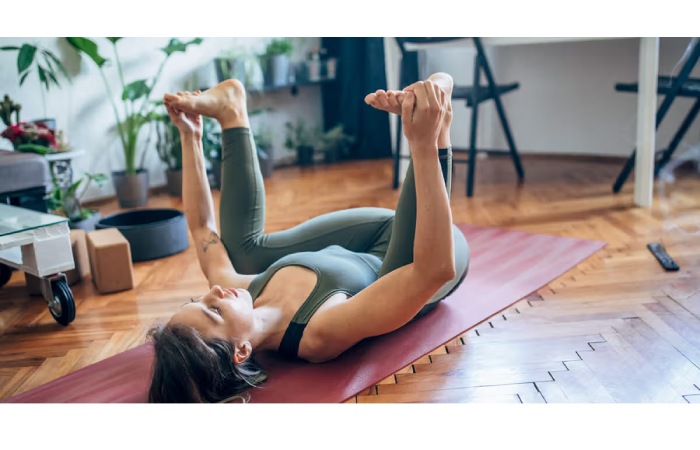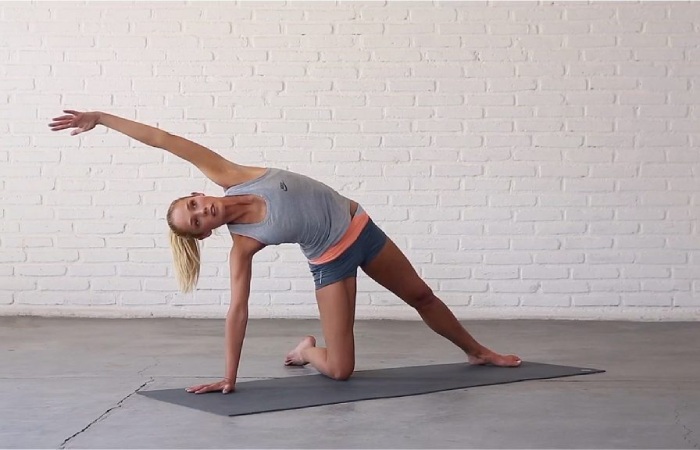People are drawn to yoga for many reasons, including its health benefits including relief from back problems lower back. Rendering to the Centers for Disease Controller and Prevention, nearly 60% of adults have experienced pain in the past three months, with back pain, in particular, being the most common type. But even if your lower back doesn’t hurt, it can become uncomfortably stiff and tight from daily activities or inactivity, such as sitting (or staying in any position) for long periods. This is where a movement practice like yoga can come in.
Yoga Poses and Elasticities for the Lower Back
Smith shares eight stretches and yoga poses that she says are most beneficial for relieving tension, unzipping the spine, and strengthening the lower back to prevent future problems.
Perform the entire series of stretches from top to bottom, select one or two stretches to repeat as their workout or add to the middle or end of a more extensive workout. For example, a modified side plank and locust pose can be used to train lower back strength. To gently stretch your lower back at the end of a long day or workout, try knee-to-chest stretches, windshield wiper twists, and downward dog to release tension.
Child’s Pose

Starting on your hands and knees, move your hips back through your heels and down, and lower your forehead to the floor. (If your knees bother you, place a blanket under them or bend over a yoga mat.)
Keep your knees slightly apart, angling them slightly into a V shape.
Place your arms at your sides, palms up.
As you remain in this pose, respire deeply into your abdomen and lower back to soften and relax your muscles.
Hold the position for 30 to 60 seconds, longer if possible and comfortable.
Cat-Cow Pose
Start on your hands and knees, with your wrists straight under your shoulder joint and your knees under your hips.
Inhale, lift your chin and chest and look up at the ceiling as you lower your belly toward the mat.
Exhale, round your back to the ceiling, tuck your tailbone, draw your abdomen toward your spine, and lower your head toward the floor.
Repeat the entire sequence four to six times, following the rhythm of each inhalation and exhalation.
Downward-Facing Dog
Start on your hands and knees: Keep your knees hip-width apart, toes tucked under, and hands shoulder-width apart.
Move your hands forward a few inches and spread your fingers.
With your hands on the mat, lift your knees off the floor and commence to straighten your legs, pointing your tailbone toward the sky (don’t lock your knees completely; keep a slight, gentle bend in your knees).
Hold the pose for four to six breaths.
Rag Doll
Stand with your bases hip-width apart and your arms at your sides.
With your knees slightly bent (knees unlocked), bend onward from the hips and let your upper body, head, and neck hang freely toward the floor.
Grasp the opposite elbow with each hand, keep the back of your neck long, and lower your head.
Deepen the knee bend if your hamstrings are very tight.
Stay in this stretch for five to eight breaths.
However, if you feel dizzy from the inverted position, come out of the pose carefully.
Modified Side Plank

Start by lying on your left side with your body in a long line.
Keeping your knees aligned, bend your left leg behind you, forming a 90-degree angle with the starting line of your body.
Place your left elbow under your left shoulder, involve your core, and lift your upper body.
Lift your left hip off the floor a few inches into a side plank so that your left elbow, left knee, and right foot support your body.
Hold for five to eight breaths. Switch sides and repeat.
Omar
Lie face down with your forehead on the mat, your arms at your sides, palms down, and the tops of your legs flat on the mat.
Breathe deeply, then exhale and engage your core. Next, focus on using only your back muscles and lift your head, chest, arms, and legs off the floor.
Hold this position for three to five breaths.
Release and repeat two or three times.
Windshield Wiper Roll
Lie on the floor, curve your knees, and put your feet flat on the floor an equal distance from the mat.
Spread your arms out to the sides.
Slowly and gently move your legs from side to side like slow windshield wipers, allowing them to drop to one side, back to the centre, and to the other side, feeling a gentle rolling and stretch in your lower back (and even your thighs and buttocks if they’re tight).
Repeat this gentle windshield wiper motion for a minute or two.
Knees to Chest (Knee Hug)
Lie face up on the floor and hug your knees to your chest, wrapping your hands around your shins.
Keep your head on the floor, gently rocking small movements from side to side.
Continue this for as long as you feel comfortable, breathing deeply into your belly and lower back, ideally until you feel your lower back begin to relax.
Benefits of Yoga for the Lower Back

Stretching and relieving surrounding muscles that contribute to lower back pain.
“Yoga poses can help soften and release tight lower back muscles, as well as the glutei and hamstrings, which often cause lower back pain,” says Kelly Smith, a certified yoga instructor and author of Mindful in Minutes: Meditation for the Modern Family.
Strength, Stability, and Mobility to Prevent and Treat Future Lower Back Pain.
Additionally, yoga can help mobilize the surrounding joints and strengthen the back and core muscles, which will help ensure back stability. “As a result, you will be less prone to long-term back pain or injury,” explains Smith.
Proper diaphragmatic breathing strengthens the body’s core and naturally reduces stress.
In addition, one of the main components of yoga is the emphasis on working with the breath while moving or holding poses. The breathing element of any yoga practice is beneficial for treating lower back pain, both directly and indirectly. “When you learn to breathe properly from the diaphragm, you will also strengthen your deep core,
which is a key factor in posture, back health, and strength,” says Smith. Additionally, yoga’s holistic deep breathing and mind-body connection are incredibly beneficial for releasing tension and reducing stress, which is often closely linked to muscle stiffness, aches, and pain.


